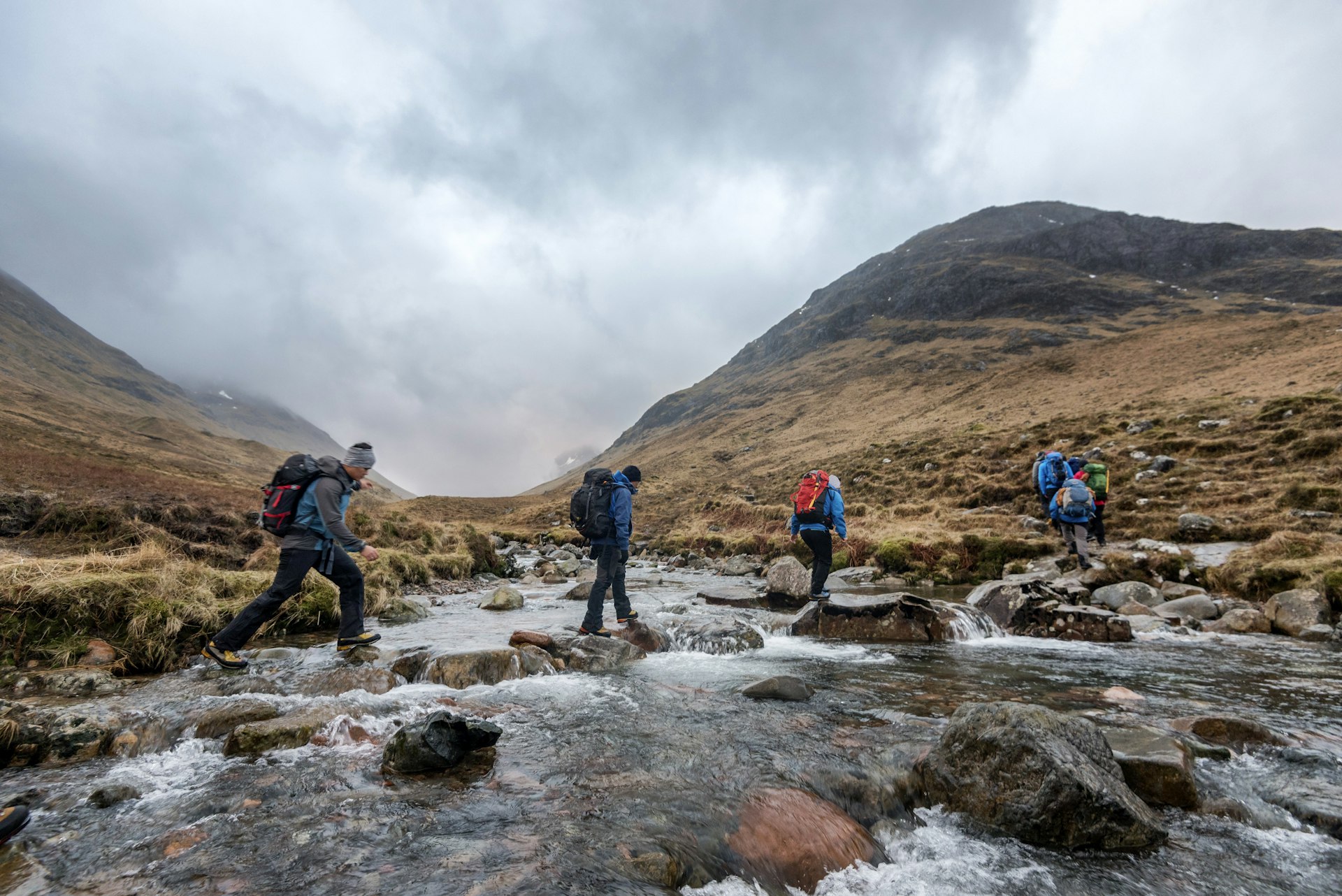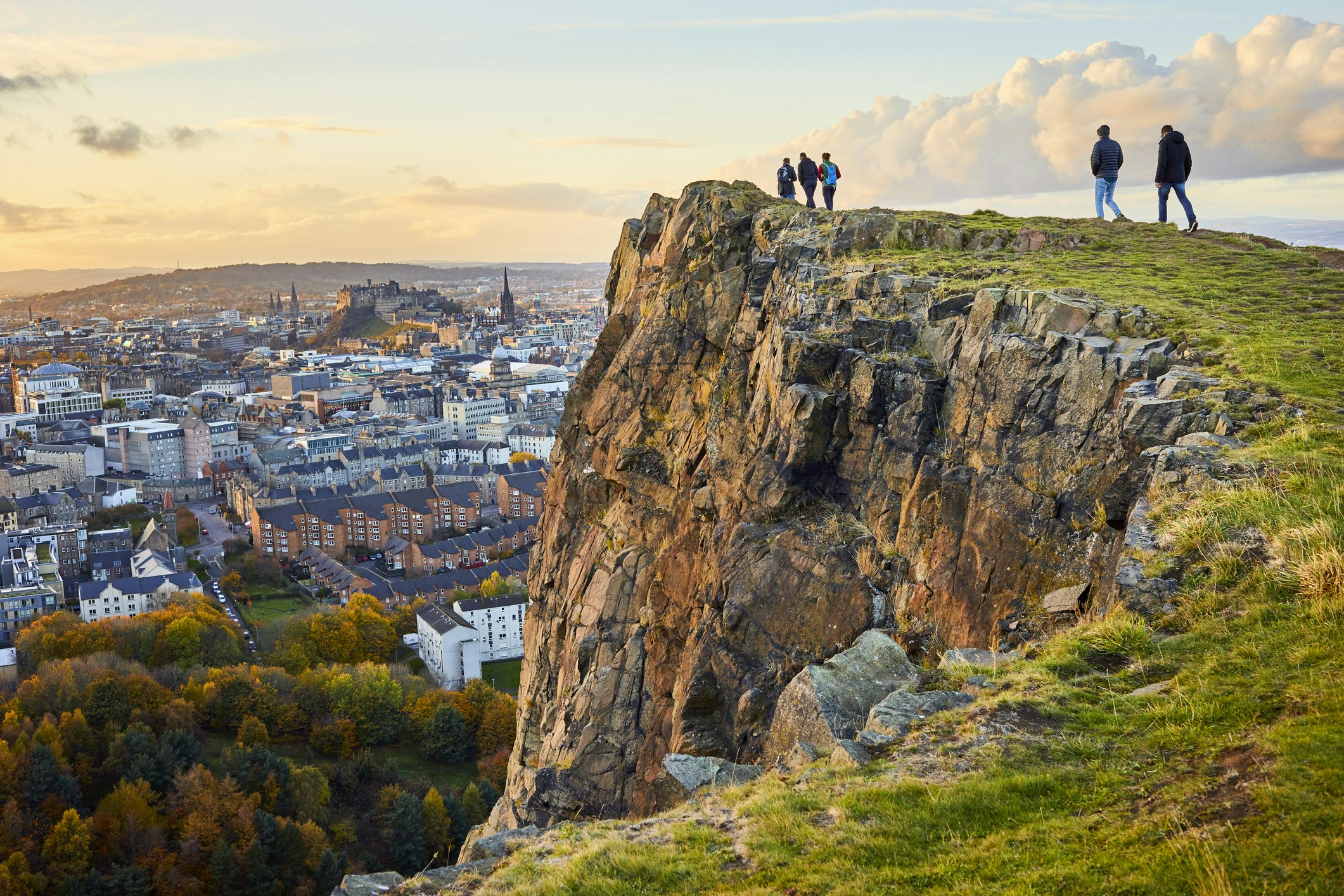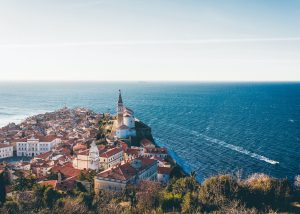
Rain, bog and midges be damned: Scotland is insanely lovely no matter what hand the weather and wilderness deal you.
Any list of Scotland’s best hikes is bound to cause outrage at the ones that have been missed out. Because this land ignites the true passion of the hill climber and the mountaineer, with tough terrain and heart-breakingly beautiful landscapes that can never be captured in words – not even those of Robert Burns.
Nobody, however poetic, can ever do justice to these brooding lochs and disorientating moors, the angry seas that beat the living daylights out of coast and island, and the moment when on a dreich day the sun bursts through the clouds with a light so piercing it’s as if the world has been made anew. Its munros don’t seem too intimidating on paper, but up close, they are gnarly monsters that leap directly from the sea.
From epic climbs to escapades in the footsteps of outlaws and long-distance hikes over moor and mountain, these are our favorite eight hikes in Scotland. Rant away: we know you’ll have your own, as hiking here is highly personal – and no matter how many times you return, you can only ever hope to scratch the surface.
Scout new ways to explore the planet’s wildest places with our weekly newsletter delivered to your inbox.  Be prepared for proper hill climbs, disappearing paths and wading through rivers in Scotland © Westend61 / Getty Images
Be prepared for proper hill climbs, disappearing paths and wading through rivers in Scotland © Westend61 / Getty Images
1. Liathach, Glen Torridon
Best munro climb
7¼ miles (11.5km), 8-10 hours, demanding
The munro that sorts the casual walker from the hard-core hiker, Liathach (“The Grey One”), is a beast, punching a burly fist high above the fjord-like depths of Loch Torridon. But if ever you are going to bag a peak, make it this one. It’s wild, rough and otherworldly up here, with near-vertical terraces of rock, tawny summits to surmount, boulders to scramble over and elating views over a thrillingly remote slice of the northwest Highlands. So remote, in fact, that the only other souls up here might be red deer, snow hares and golden eagles.
These mountains are ancient, partly formed by two-billion-year-old Lewisian gneiss (some of the oldest rock on the planet), and spectacularly buckled and contorted during the last Ice Age.
Starting at the car park near Glen Cottage in remote, river-woven Glen Torridon, the hike eases you in gently enough – ach, but don’t be fooled! After crossing a stream, you soon begin to climb. And climb. And relentlessly climb the brutal mountain, with a few rocky scrambles before you reach the knife-edge, boulder-scattered, breathtakingly exposed ridge that gets your pulse racing, turns your legs to jelly and – oh, wow – makes you gasp out loud at views that ripple over lochs, glens and tawny munros as far as the Isle of Skye on clear days.
And do make sure you choose a clear day from early summer onwards, as it’s no fun being up here in the mist, snow or driving rain. Just when you think the hard part is over, you’ve got to get down – a tough, steep scree-and-bog scramble that will make your knees scream. You won’t care; you’ll still be drunk on that view. Bring a map, compass, food and water.
2. North Ronaldsay Circuit, Orkney Islands
Best hike for island enchantment
12 miles (19km), 6.5-7.5 hours, easy
Out on a limb off Scotland’s northeast coast, North Ronaldsay is the northernmost of the Orkney Islands. Flat, green and hemmed by fortress-like drystone walls that keep its ancient seaweed-eating sheep on the rocky shores, this little island has a quiet magic that seeps into your soul, with its surreal light, Old Norse place names, Viking heritage and waters where, if you dip in a casual finger, you’ll surely pull up a wreck. The landscapes are gentle, but the sea here is fierce, as it is here that the North Sea smashes into the Atlantic with all its might.
Optionally starting in Hollandstoun, this easy full-day hike is a delight, giving you a flavor for this island of big skies, powder-white beaches and phenomenal wildlife – seals, orcas, a feast of birds (from black guillemots to eiders), even the occasional visiting walrus…
Many moments will grab you, but you certainly won’t forget clapping eyes on the stripy, mid-19th-century lighthouse guarding the island’s north, which at 42m (139ft) is the UK’s highest, where the views reach all the way to Fair Isle on cloudless days. If you want a memento of the sheep (of course you do), pop into its gift shop for wooly souvenirs. In the south, check out the bird observatory and the seal rookery at the Broch of Burrian.
 Warm up after a day on the trails with a night in a remote bothy © Getty Images
Warm up after a day on the trails with a night in a remote bothy © Getty Images
3. Cape Wrath Trail, northwest Scotland
Best back-of-beyond multi-day trek
230 miles (370km), 2-3 weeks, demanding
No other hike breaks bodies and souls and reconnects you to the natural world like the Cape Wrath Trail, where the roads fizzle out, the GPS draws a blank, and the paths are mostly non-existent. Here it is just you and the lonely, rarely seen wilderness of far northwest Scotland for mile after mile, day after day, week after week. Bog up to your waist, fast-flowing rivers to cross, blisters and a thousand midge bites – it’s all worth it, say those who’ve had first-hand experience of the trail, for a glimpse of the mountains and middle-of-nowhere glens whose stark beauty makes you pinch yourself in disbelief.
From Fort William to Cape Wrath, the most northwesterly point on the British mainland, this hike is epic not because of a solitary view or a moment, but because you are pitting yourself against the elements, forging a trail through the wilds, putting one foot in front of the other when you are bone-tired, lost and wet and frozen to the core – feeling what it means to be truly alone.
That said, there are times you’ll never forget: glimpsing the flying buttresses of the Assynt mountains, glowing rust red in the last embers of day, seeing a stag guard a lonely peak, slipping through the machair and shifting dunes to mile-long Sandwood Bay, warming your bones by a fire in a bothy. And then, of course, at the trail’s end, there are the high, ragged cliffs of Cape Wrath, which takes its name from hvarf, Old Norse for “turning point”, as this is where the Vikings would turn their boats for home. On a day when the ocean unleashes its fury, however, wrath could have a different meaning.
You’ll need to be fit, experienced and entirely self-sufficient for this hike, as facilities are sparse and navigation points few. The Cicerone Cape Wrath Trail is a useful guide. Signals come and go, so revert to the old-fashioned way of staying safe on the trail – tell someone where you are.
4. The Southern Upland Way
Best coast-to-coast hike
214 miles (344km), 12-16 days, challenging
With the obvious temptation of legging it up munros, the Highlands get all the fuss when it comes to listing Scotland’s best hikes. But it would be frightfully rude to overlook Southern Scotland, especially when it delivers a beauty so rarely seen and feted. Unspooling through the tawny pleats and folds of the Southern Uplands, the coast-to-coast Southern Upland Way from Portpatrick in the southwest to Cockburnspath in the east is one of the country’s most challenging long-distance Great Trails.
How so? Well, you might not be clambering up Scotland’s giddiest peaks, but make no mistake – this multi-day march is a monster. The days are long, the going is arduous, and you’ll need your wits and an old-fashioned map and compass to navigate, particularly on the misty moors. The trail is remote, wild, boggy when wet, and at times exposed, but the scenery is tremendous, with vast, heathery moors giving way to greywacke sandstone hills. And with a little careful planning, you can arrange some guesthouses to pick you up at day’s end to ease things a bit.
On this trek, nature and culture constantly jostle for attention: from the placid shores of St Mary’s Loch to spectacular red-sandstone Melrose Abbey, where Robert the Bruce’s heart is buried, Abbotsford on the banks of the River Tweed, once home of writer Sir Walter Scott, and 466m-high (1529ft) Wanlockhead, Scotland’s highest village.
 The views of Edinburgh from Arthur’s Seat are spectacular © Andrew Merry / Getty Images
The views of Edinburgh from Arthur’s Seat are spectacular © Andrew Merry / Getty Images
5. Arthur’s Seat, Edinburgh
Best city hike
2.4 miles (3.9km), 1½-2 hours, easy-moderate
You can admire the crag-hugging castle and walk the Royal Mile, but the true beauty of Edinburgh is that you’re only ever a muddy boot-step away from proper hill country. One of the quickest forays into the wilds is Arthur’s Seat, flinging up above the capital in all its dark, brooding glory. At just 251m (823ft) high, this stump of a volcano that last blew its top 350 million years ago is a bairn of a mountain by Scottish standards, but as with most things in this land, it is not to be underestimated. Robert Louis Stevenson summed it up neatly when he called it: “A hill for magnitude, a mountain in virtue of its bold design.”
You’ll need a sure foot and a bit of puff to ramble up to the wind-beaten summit on the trail from Holyrood, former hunting ground of Scottish monarchs. There are several routes to choose from: from the easy-peasy green and blue routes to the steeper, rockier, more challenging – and ultimately more rewarding – red route, following a lava flow Lang Rig up, and descending via the Salisbury Crags. Either way, the views at the top are sensational, sweeping across the capital to the Forth Bridge in the west and beyond to the Highlands.
6. Ben Nevis (Càrn Mòr Dearg Arête)
Best peak hike
11 miles (17.5km), 10-11 hours, challenging
Ben Nevis gets more than its fair share of hiker traffic, and we get it: the temptation to stand atop “The Ben” is irresistible. For all its crowd-pulling power, Britain’s highest peak at 1345m (4412ft) offers a wonderfully wild slice of the Highlands, not to mention out-of-this-world views from the summit, where Scotland’s munros, glens and lochs spread out at your feet like a great tweed blanket. On clear days, you can even see the outline of Northern Ireland in the shimmering distance.
Most hikers stomp up the well-trod and well-defined Pony Track, the shortest, quickest, easiest (well, relatively speaking) and most crowded way to the top. If you have the nerve, leave them to it and tackle the Càrn Mòr Dearg Arête instead, which takes you along a curving, knife-edge ridge, with close-up views of The Ben’s fierce North Face.
You’ll need to get an early start as this is a long, strenuous day, packing in a lot of scenic diversity – taking you from the North Face car park up through forest and onto rocky ground. While no climbing is involved, you’ll need to be confident with heights and scrambling, as there are exposed, boulder-strewn, scree-scattered sections to negotiate. But having these ravishing views largely to yourself make it well worth any extra effort.
 Take on one of Skye’s challenging hikes © Peter Burnett / Getty Images
Take on one of Skye’s challenging hikes © Peter Burnett / Getty Images
7. Sgùrr Alasdair, Isle of Skye
Best island climb
5 miles (8km), 6-8 hours, challenging
The Isle of Skye is full of highs, none more enthralling than Sgùrr Alasdair, the loftiest peak in the Black Cuillin at 992m (32,55ft). With their dark, gnarly fangs of rock shooting up straight from the sea, the Cuillin mountains present some of Britain’s toughest terrain to both hikers and mountaineers. And then there’s the weather, which even the Vikings reviled: Skye takes its name from the old Norse sky-a, meaning “cloud island.”
Seen from ground level, these peaks look insurmountable, and some are unless you happen to be familiar with rope and karabiner. The Holy Grail for mountaineers is, of course, the Inaccessible Pinnacle (In Pinn), a mighty, merciless fin of rock that is Sgùrr Alasdair’s cake topper. If you’re not ready to climb it just yet, you can get a taste of the intrepid (and eyeball the abseilers) by hoofing it up to the base.
Starting at Glen Brittle memorial hut, this rough, tough hike involves scrambling over rocks and scree above steep gullies as you pick your way up the slopes. Navigation can sometimes be tricky, especially if mist or rain sweeps in. But pick a clear day, and you’ll be spellbound by the view over the rugged mountain and bright-blue loch, which reaches all the way to the isles of Rhum, Eigg and Canna.
8. Rob Roy Way
Best historic hike
79 miles (124km), 6-7 days, moderate
Dashing Scottish outlaw at the time of the Jacobite risings, Rob Roy – or Robert Roy MacGregor to give him his rightful name – is perhaps the greatest and most romantic of all Scottish folk heroes. On this Great Trail walk from Drymen (on the far more famous and crowded West Highland Way) to Pitlochry in Perthshire, you’ll cover the same ground as the intrepid, rabble-rousing bandit.
The route throws you in the deep end of the Highlands, with a feast of all the kind of scenery and history you come here for: glacier-sculpted glens and swift-flowing burns, glassy rivers, frigid lochs and falls, the forests of the Trossachs, Clachan An Diridh stone circle on Fonab moor and the 12-arch Glen Ogle viaduct. There’s some hilly terrain to negotiate, with a fair few ups and downs, but no tough climbs to speak of.
Much of the trail is on narrow roads, tracks and cycle paths, but you’ll still need good kit, a reasonable level of fitness and a map and compass for when the path is not properly defined.



